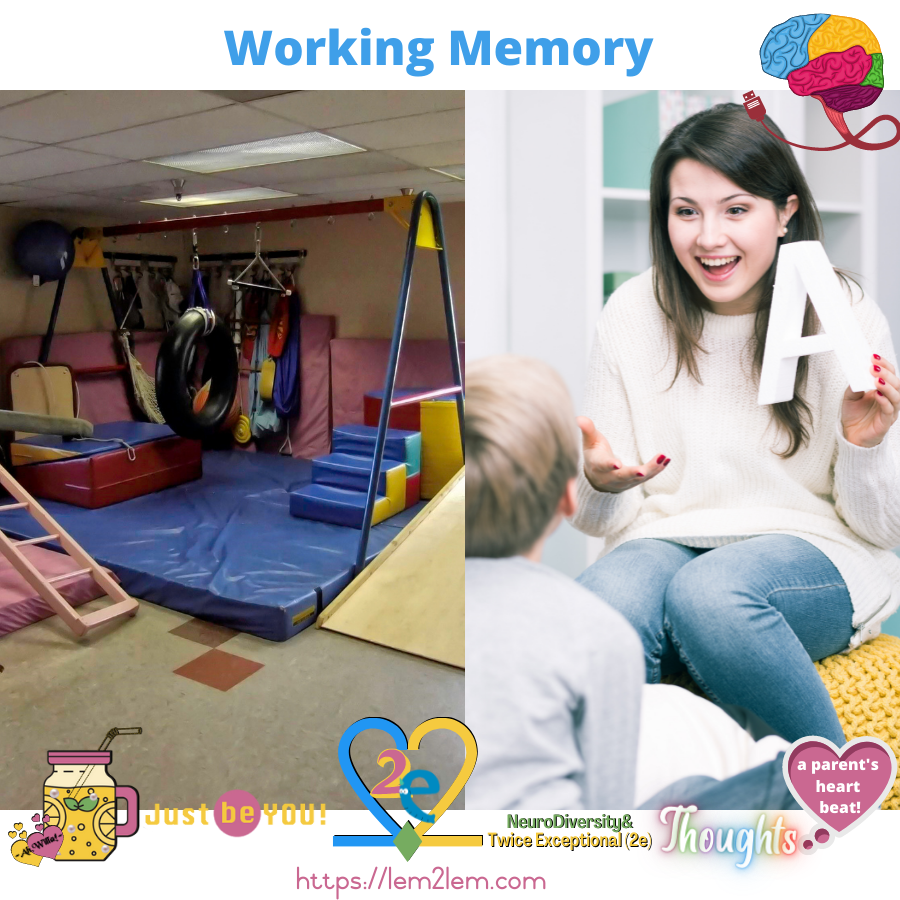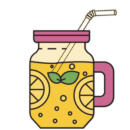Experts/Books/Organisations in general are hyperlink, so if you click on the name it should take you to the website/social media platform of the resource/reference.
What can be done to improve working memory ?
Know and understand that there is no quick fix nor standard box for all type of working memory solutions/therapies and that tailored therapy based on the person’s age, symptoms, the type of injury/issue and the time period since injury/issue. For NeuroDiverse people that is often since birth.
Know and understand that it is “invisible” of nature since cognitive problems can not be seen with the eye and often gets labelled as “not trying” / “careless” and so on. This kinda labelling is not helping and actually contributing to more problems in the sense of breaking down confidence and self-esteem.
As far as I know – NOTHING can be done to improve working memory, but the brain is ADAPTABLE and we can learn/teach skills/techniques that will help with the process. The average person only has 4 slots for working memory that last 10-15 seconds. The secret is to build long term memory by creating chunks of data (associations) to free up working memory space.
Start by reducing distractions; if possible, when trying to remember something. Keep in mind that essentially, it takes extra time, practice and repetition. Patience is a virtue.
Remember that for those with working memory issues it is always best to hear (auditory), see (visual) and touch (kinetic) the information in order to process it, but writing it down builds the motor memory – so all 4 these activities needs to take place to support working memory.
Easy memory, as well as left-right brain integration games to play at home:
A fun and simple game to play is the memory-circle game. Have everyone share a item such as an object / color / name / place / fruit / vegetable; taking turns in a circle, each new participants must remember the previous participants words and add their own. If a participant got the order wrong, they are out until nobody is left in the memory-circle. Start with a number of items they can readily recall and then adding on (start with success, maybe 3 items then work up to 4 items, 5 items). Participants should be able to recall 7-10 items in one turn.
Another fun game is study a list of items (object/color/name/place/fruit/vegetable/ect)in a specific order, then cover them up and have them produce the same sequence on their side. This also works on visualisation which is an area where many of our B & Q kids struggle. Even playing with holding onto number sequences in the car from you and repeating them back works on working memory, (auditory).
Bal-A-Vis-X type of activities will also be very helpful (it helps with focus and distressing while having a bit of fun. If you can not afford or do not have a Bal-A-Vis-X practitioner near you, watch this video and work something out for at home.
Go to the Bal-A-Vis-X demo video, click here.
A nutrition program adds value
A nutrition program that eliminates gluten/wheat, sugar, yeast and dairy would support working memory. This can be overwhelming, but the whole family benefits on the end. Best is to work with a natural nutritional scientist or a dietician that applies integrative medicine with the focus on whole foods first. Also, have an integrative medical practitioner or a nutritional scientist look at your/your child’s Gut-Microbiome-Brain-link health as it can also impact functionality.
The impact of school on working memory!
Make sure the schools are not expecting working memory that is beyond the age appropriate capabilities and advocate for more grace/time to do work so that kids are less frustrated.
Therapy
Visit an OT and/or Speech Therapist help to understand where the actual issue lies – is it auditory working memory, visual working memory or motor memory. Some OT’s might also have great life hacks type strategies and could assist the child (adult) to practice with trial and error to see what works best for the child/adult.

Cognitive Rehabilitation Therapy (CRT)
Cognitive Rehabilitation Therapy (CRT) is a broad term used to describe treatments that address the cognitive problems that can arise after a brain injury and other brain issues. CTR does not refer to a specific treatment since a wide range of symptoms with different severity levels can apply from person to person. (CRT) cognitive assessment helps to evaluate level of alertness, orientation to surroundings, and memory of recent events.
Memory rehabilitation, a part of cognitive rehabilitation, is a therapeutic activity that may play a role in the recovery of memory functions, or in enabling the individual to adapt to the problems. A cognitive rehab person will have plenty of tips and strategies. A cognitive rehab person works mainly with people after a stroke, head injury, or more severe concussion. They work to rebuild skills or use other skills for compensation. But they should also be able to assist NeuroDiverse children/adults with improving working memory.
A cognitive rehab person can be:
- A Neuropsychologist
- A Specialized Occupational Therapist (OT)
- A Speech-language Pathologists (SPL) / Speech Therapist
- A Physical Therapist
- A Specialized Nurse
- A Specialized Physiatrists
- A Neurologist or Psychiatrist to be consulted in regards to medications.
Cognitive Rehabilitation Therapy (CRT) services can be provided at:
- Hospitals
- Rehabilitation / Step-down clinics
- Therapist Practice/Consultation Rooms.
Authors to look up:
Barbara Oakley’s Books – she covers Cognitive Neuroscience regarding all types of memory
Nelson Dellis’s books on short term memory techniques.
more to follow soon...
Please come back from time to time as we will add new information/resources. You are also welcome to read/leave comments just below the signature.

An Autodidact / MultiPotentiolite / Content Creator / Designer / NeuroDiversity Activist / Poet / Genealogist / Mom-Tutor-Fundraiser-Activist / and more / simplyME!
♫ NeuroDiversity rocks the world – accept & adapt♫
